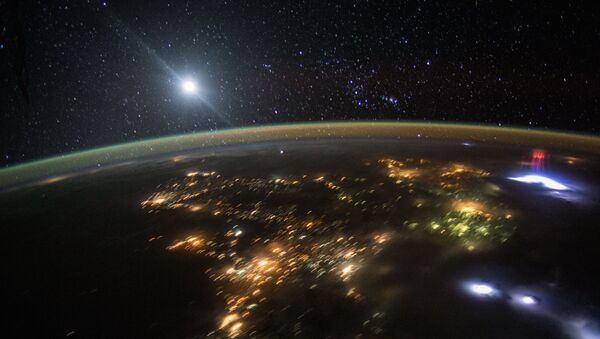The image, captured on August 10 from the International Space Station, shows the moon and a massive thunderstorm, and above the storm cloud is the red sprite, which is similar to lighting.
Steve Cummer, of Duke University, explained how sprites form in National Geographic News:
"They're sparks created in the upper atmosphere, well above a storm cloud, that follows lightning below the cloud. The [lightning] charge creates an electric field and, when it's big enough, it drives a spark that propagates upward."
Dave Mosher, of Tech Insider, observed of the August 10 photo:
"Note the tendrils (purple) rising from the thunderstorm (bright white/blue) up toward the flash of the sprite (red), sort of like an electrical puppeteer and marionette."
The spark turns red because of nitrogen floating high in Earth's atmosphere. The burst of electricity causes the gas to emit a red glow.

Sprites can extend up to 50 miles and stretch a few miles wide. And while they are very common, sprites are rarely photographed, Tech Insider reported.
A thunderstorm produces a sprite once or twice a minute, yet each flash lasts only a few milliseconds. Sprites are very difficult to see from the ground, because they are typically clouded by an oncoming thunderstorm.


